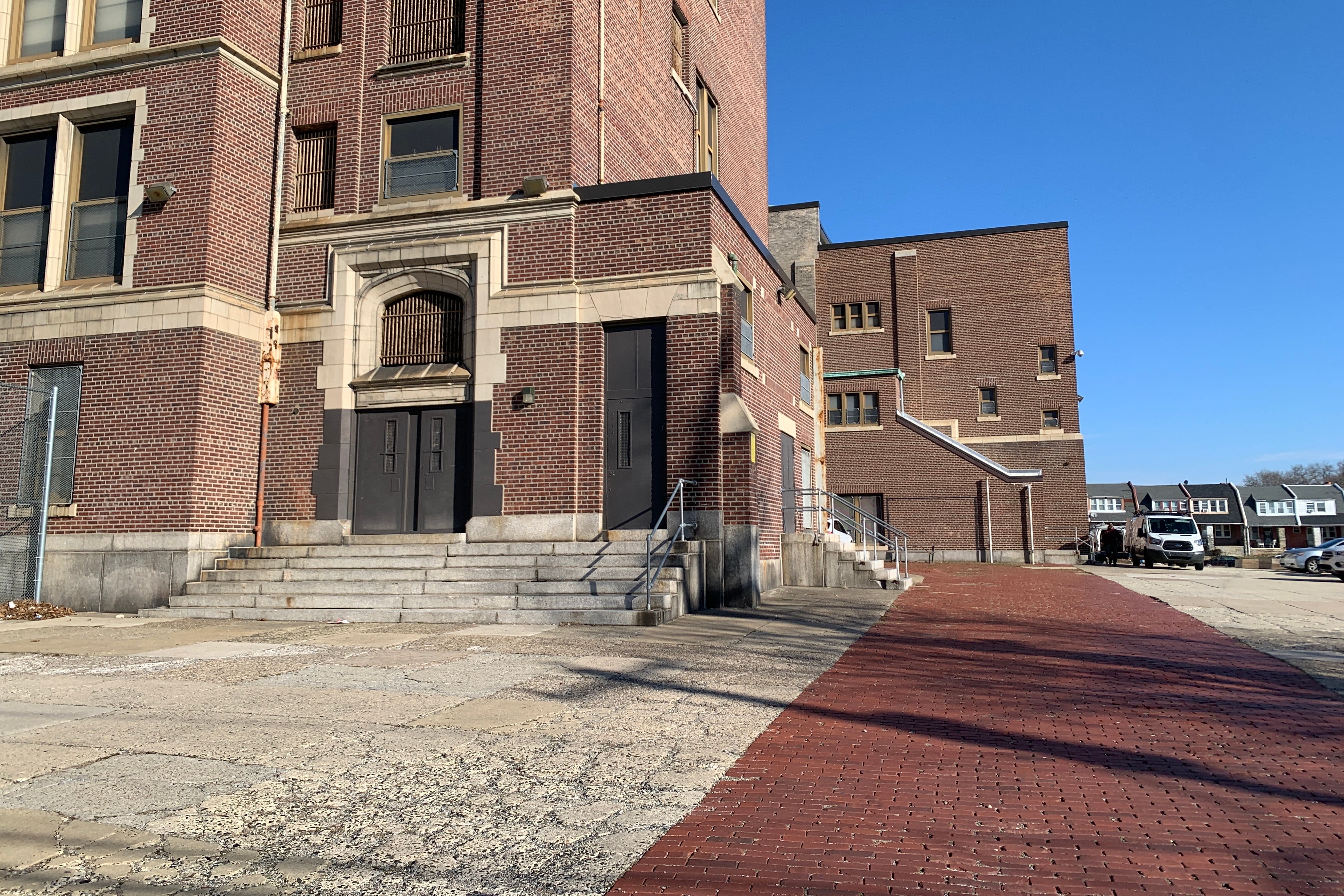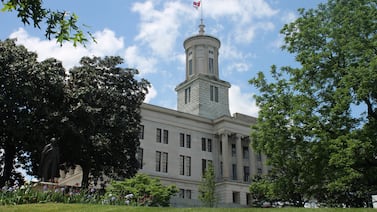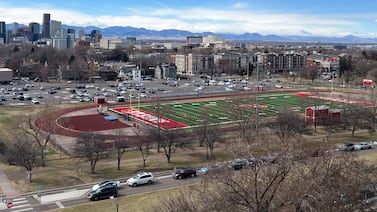As Philadelphia education leaders confront a growing asbestos crisis, they also face a conundrum: The more they do to discover the extent of the problem and address it, the greater the impact on students.
And meanwhile, frustrated parents are demanding the district show them a way forward.
“What will be the plan in the future when these types of things occur?” said Sheila Johnson, whose daughter attends Building 21, which abruptly closed in March after the district discovered flaking asbestos and hasn’t reopened. “[District leaders] have already stated that yes, there may be other schools affected by this because of the older buildings. So what are you going to do?”
The recent discovery by inspectors that asbestos was routinely used in plaster in school buildings, which was not previously assumed, creates risk that the material could eventually become dangerous. And the accuracy of previous inspection reports that marked buildings safe with respect to asbestos has now been thrown into serious question.
Last week, Frankford High School and Mitchell Elementary School also closed their buildings to remediate flaking asbestos in plaster walls and ceilings. In letters to parents, district officials and the building principals said that both schools will remain closed for the rest of the school year and likely into the summer.
Such closures have spurred fears that a series of building shutdowns is looming in the district, where students are still trying to recover from disruptions to in-person learning caused by COVID. There’s also been a dispute between city and district officials about whether the district has kept parents and others adequately informed about asbestos-related issues, which have posed problems in aging Philadelphia schools for years.
After officials shuttered Building 21 — a small high school located in a 100-year-old former elementary school — due to damaged asbestos, most Building 21 students have been learning virtually. A few have opted for in-person learning at Strawberry Mansion High School, which is six miles away.
That virtual learning has not worked for many students.
“My daughter is sinking like a ship,” Johnson said of her 11th grader. She said virtual learning for two years during the pandemic pushed her child into a depression and now, the majority of her high school career will have been remote.
‘Incomplete or inaccurate’ reports on asbestos in schools
Scientific research has shown that breathing in asbestos fibers can cause certain diseases and increase the risk of certain cancers, including lung cancer and mesothelioma.
Previous estimates have determined that approximately 80% of Philadelphia schools were built prior to 1978 and are likely to contain asbestos. It was commonly incorporated into floor tiles, pipe insulation, and some paint and cement roofing in school buildings constructed prior to the 1970s.
A district statement on Friday said of the 321 school buildings in the city, 295 district buildings “have asbestos-containing materials.”
Undisturbed asbestos is not harmful, and it is only considered dangerous when it begins to flake. But other infrastructure problems — failing roofs, leaky windows, or faulty boilers that release steam — can compromise asbestos. And the district has suffered from years if not decades of deferred maintenance on buildings that on average are more than 70 years old — all of which makes the discovery that asbestos is also in most plaster more concerning.
Superintendent Tony Watlington said in a statement on April 7 that “in the coming weeks and months, we continue to anticipate that more damaged asbestos will be identified.” But the district’s facilities plan doesn’t say what it will do if more schools are closed for extended periods.
The most recent federally mandated report posted for Building 21 is from 2018-19, and showed asbestos in plaster at various locations, including the auditorium ceiling, but not throughout the school.
But the discovery of the material in plaster in Building 21 set off alarm bells, and spurred the district to retest in Frankford and Mitchell, the district said.
The plaster in Building 21 was for years marked safe by inspectors on building reports. The district now says those records were “incomplete or inaccurate,” throwing into question decades of inspection data.
Watlington, who is coming up on his first anniversary as superintendent, is facing a daunting challenge: The more the district investigates, the more damaged asbestos it’s likely to find. That means more school closures and asbestos remediation for a district that is already billions of dollars in arrears when it comes to facilities repairs, upgrades, and maintenance.
And according to the district’s facilities plan released late last month, 29% of its facilities workforce positions were vacant.
But what matters to Sonja Grant, another parent of a Building 21 student, is that “there was no consideration of parents” when the school first closed.
Grant said she wanted to respond to a survey, speak to school leaders at a roundtable, or otherwise open a dialogue with her school and the district.
But Grant said “they did not respect us enough or care enough to give us an option or ask ‘what would you like to see?’ or ‘how would you like us to move forward?’”
Philadelphia district response targeted by politicians
Asbestos is not a new issue for the district. In 2019 alone, several Philadelphia schools were forced to close because of damaged asbestos. In 2020, the district settled with a teacher who contracted mesothelioma for $850,000. And students and teachers have perennially fought for remediation efforts to make their buildings safe.
The federal Asbestos Hazardous Emergency Response Act, or AHERA, requires asbestos inspections in schools every three years. The AHERA reports, which are posted on the district website, say “NAD” — no asbestos detected — for most plaster walls and ceilings in Mitchell, Frankford, and Building 21.
Michelle Whitmer, an asbestos expert at The Mesothelioma Center who has written about the issue in Philadelphia schools for years, said plaster containing asbestos is considered a more dangerous type of asbestos product because of its “friability.” That means it can be easily crushed into a powder, releasing the dangerous fibers into the air.
That the plaster was originally noted as not containing asbestos is worrying, she said.
“To me that suggests that they may have not done proper testing to identify what was actually inside the material,” Whitmer said.
According to a district presentation to the City Council last month, the school system has a three-year, $24.2 million contract with Tetra Tech, a consulting and engineering firm, “to support and restructure the District’s Asbestos Hazard Emergency Response Act management program.” Tetra Tech took over management of the AHERA inspection process last August.
AHERA reports show Tetra Tech managed the Mitchell building inspection last December. Its report says no asbestos was detected in plaster walls and ceilings at the time. Investigators did detect asbestos in some floor tiles, pipe insulation and other areas.
Tetra Tech did not respond to several requests for comment.
In an April 7 statement, the district said identifying the problem is necessary and finding damaged asbestos is evidence of success.
“This is not an indication of the program failing, but rather the program is working to protect health and safety through the identification and management of environmental concerns,” the district said.
The statement also noted that the oldest buildings tend to have the most plaster, and that these buildings “have been prioritized in this plaster review.”
For some, that position represents an improvement in Philadelphia schools. Jerry Jordan, president of the Philadelphia Federation of Teachers, said Watlington is being more “transparent” than leaders have in the past.
“So much over the years, has been swept under the rug,” Jordan said in an interview. “The buildings have been neglected forever. And I know that that sounds like an exaggeration, but it really isn’t.”
Monique Braxton, a district spokesperson, declined to answer specific questions about long-term plans regarding asbestos removal and school closure.
But other power players in the city say the district has fallen short. Councilmember Isaiah Thomas, a Frankford graduate, has suggested the city might withhold district funding until it shares a detailed asbestos plan, and cautioned that the district’s response could impact its state funding. And mayoral candidate Helen Gym blasted the district for “being reactive” instead of prepared.
“‘I’m just disappointed with the district in their handling of our children’s education,” said Johnson, the Building 21 parent.
Billions needed to address failing infrastructure in schools
The danger from asbestos in schools across the country continues to cause concern in the federal government and elsewhere. In recent years, there has been exposed asbestos in schools in cities like Chicago, New Orleans, and Berkeley, Calif.
In an interview, Mayor Jim Kenney said he was “disappointed” that the district had not alerted city officials earlier to the scope of the problem. “I wish we had known about this sooner,” he said.
But he added that the city is ready to help.
“I’m not an expert on asbestos, but we’ll do whatever we can to get these schools back online,” he said, which could include enlisting members of the construction trades to help with asbestos removal and abatement.
The district estimates that $4.5 billion is “required to address building systems that are either failing, damaged or beyond their service life.” Facilities reports say an additional $430 million is also needed to “address health hazards, risks, and life safety deficiencies.”
But regardless of what the district does next, parents like Johnson and Grant say they need to be at the table.
“We are rational people,” Grant said. “We want results and we want to be heard.”
Dale Mezzacappa is a senior writer for Chalkbeat Philadelphia, where she covers K-12 schools and early childhood education in Philadelphia. Contact Dale at dmezzacappa@chalkbeat.org.
Carly Sitrin is the bureau chief for Chalkbeat Philadelphia. Contact Carly at csitrin@chalkbeat.org.
If you are having trouble viewing this form, go here.




